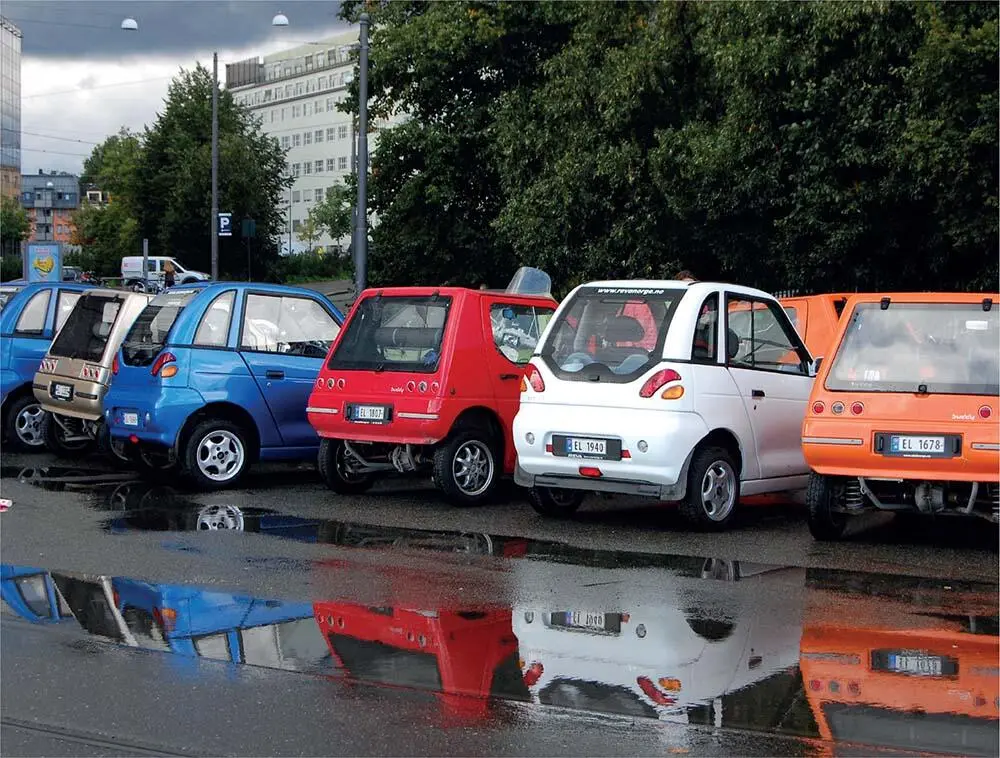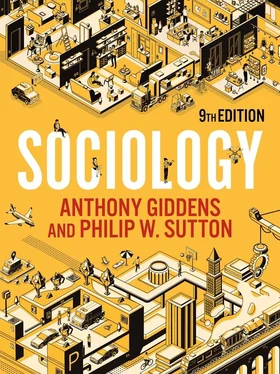In Norway, by contrast, electric car-ownership has increased rapidly since 2010. In March 2019, battery electric vehicles (BEVs) made up 58.9 per cent of the country’s new car sales. In the UK, the figure was just 0.9 per cent (Browning 2019). Indeed, Norway is a leader in switching from fossil-fuelled to electric cars. Transport analysts point to the many benefits and government incentives which encourage Norwegian consumers to make the move. For example, electric car owners do not pay the 25 per cent VAT on the purchase, and they can use bus lanes, park for free in many car parks and parking areas, charge for free at the kerbside, and pay no or reduced road tolls (Lindeman 2018).

Norway’s electric car revolution is much lauded, but it has been built on a raft of government incentives, such as free city-centre car parks for electric cars. Will other governments be prepared to commit to this approach?
Yet Norway’s economic success is far from an environmentalist’s dream, as its wealth since the 1980s has actually been built on fossil fuels. Around half of Norway’s export earnings are from oil and gas, and in 2017 the country became the second largest gas exporter behind Russia (Perrone 2019). The generous electric car incentives are also gradually being reined in. At the time of writing, there are plans to remove the VAT exemption in 2020, to end free battery charging, and to impose road tolls on BEVs. However, petrol and diesel vehicles will still face higher taxes and charges than BEVs, keeping the latter as a competitive option. Whether other countries are prepared or even able to follow Norway’s lead remains, for now, an open question.
The shift to electric vehicles seems to be a sensible solution to the problem of greenhouse gas emissions from transport and urban pollution. Why might it not be the panacea for global warming that some perceive it to be? How else could transport emissions be radically reduced, and what changes would be needed to bring it about?
Yet we should remember that electric cars are still cars – they have to be manufactured, powered and disposed of at the end of their life, they need parking spaces and roads, and they bring about traffic congestion. Therefore they continue to generate similar social and environmental problems to other types of car. In addition, electric vehicles are environmentally beneficial only if the electricity they use is produced from low- or zero-carbon sources such as Norway’s hydro-electric system or renewables such as solar or wind. And even here the mass take-up of electric cars will require a major expansion of electricity generation capacity. Where coal, oil and gas remain key planks of a country’s energy mix, the environmental benefits of electric cars may not be so clear.
Dennis and Urry argue that the twentieth-century ‘car system’ of mass individual ownership of petrol-fuelled vehicles driving around extensive road networks may not survive in its present form, and they are likely to be correct. But the ‘electric car system’ of the future, despite playing a key role in reducing CO 2emissions, currently looks a lot like the old oil-based one. At least in the short to medium term, the private car looks set to retain its symbolic value as part of the transition to independent living and adulthood as well as embodying the modern ideals of freedom and liberation.
Consumerism: a romantic ethic?
A further aspect of modern consumerism is its pleasurable aspect. But why is it pleasurable? Some have argued that the pleasure of consumerism lies not in the use of products but in the anticipation of purchasing them. Colin Campbell (1992) argues that this is the most pleasurable part of the process – the wanting, the longing after, the seeking out and desiring of products, not the use of them. It is a ‘romantic ethic’ of consumption based on desire and longing. Marketing of products and services draws on this anticipatory consumerism in seductive ways to create and intensify people’s desires. That is why we keep going back for more and are never truly satisfied.
From an environmental perspective, the ‘romantic ethic’ of consumerism is disastrous. We constantly demand new products and more of them. That means more production, so the cycle of mass production and mass consumption continues to churn out pollution and wastes natural resources. At the input side of production, natural resources are used up in enormous quantities, and, at the output end in consumption, people throw away useful things not because they are use-less , but because they are no longer in fashion or fail to represent their status aspirations.
The sociology of consumption shows us that the combination of industrialization, capitalism and consumerism has transformed society–environment relations. Many environmentalists and more than a few social and natural scientists have concluded that continuous economic growth cannot carry on indefinitely. The resulting pollution might have been ecologically insignificant if it had been restricted to a small part of the global human population. However, when industrialization spreads across the planet, when a majority of people live in huge cities, and when capitalist companies become multinational and consumerism seduces people in all countries, then the natural environment’s capacity for recovery and resilience becomes severely weakened.
Although the rich are the world’s main consumers, the environmental damage caused by growing levels of consumption has the heaviest impact on the poor. As we saw in our discussion of global warming, the wealthy are in a better position to enjoy the many benefits of consumption while avoiding its negative effects. At the local level, affluent groups can usually afford to move away from problem areas, leaving the poor to bear the costs. Chemical plants, power stations, major roads, railways and airports are often sited close to low-income areas, and on a global level we can see a similar process at work: soil degradation, deforestation, water shortages, lead emissions and air pollution are all increasingly concentrated within the developing world. What is needed is a perspective which connects the developed and developing countries within a single project, and sustainable development aims to do exactly that.
Limits to growth and sustainable development
In The Ecologist , a UK campaigning magazine, Edward Goldsmith and his colleagues set out the charge against industrial expansion in their A Blueprint for Survival (1972: 15): ‘The principal defect of the industrial way of life with its ethos of expansion is that it is not sustainable … we can be certain … that sooner or later it will end.’ Such doom-laden forecasts used to be described as ‘catastrophist’ and were restricted to the wilder fringes of the environmental movement. However, the idea now has wider currency among young people, members of the public and policy-makers. Sustainability is a central motivating idea for environmental campaigners – ensuring that human activity does not compromise the ecology of planet Earth.
One important influence on the rise of environmental movements and public concern about environmental problems can be traced back to a famous report first published in the early 1970s, which set out the case that economic growth could not continue indefinitely. The report and its findings are discussed in ‘Classic studies’ 5.2.
Читать дальше













